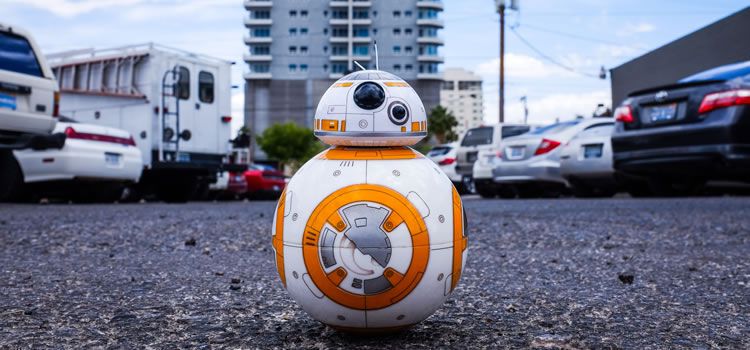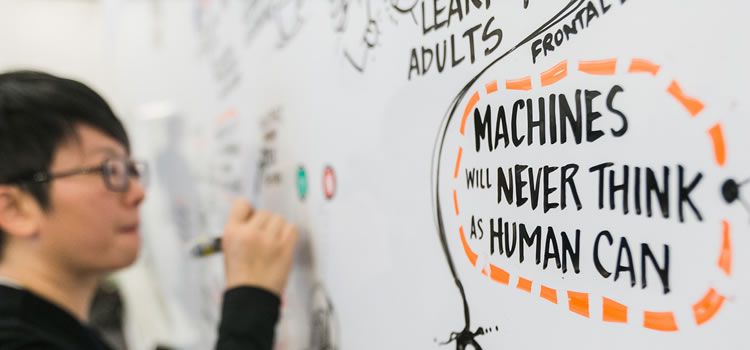User experiences and artificial intelligence are inextricably entwined in today’s world. They both inform and affect how the other works. Some people think AI will ultimately replace the need for human-driven UX.
In reality, it may only change the way humans approach UX. To keep pace with digital trends, UX professionals must learn how to use AI as a design and development tool.
AI can affect user experiences in two different ways – it can impact the fundamental design process as well as the actual interaction between the digital interface and the human user.
For years, smart algorithms have been driving better personalization and changing how humans interact with interfaces. Netflix, Pandora, Google, Facebook, Amazon, and a number of other companies use AI to deliver the right content and recommendations on demand.
The advancement of smart systems can also impact the UX design process. The Grid offers a clear case example of how AI is changing the field of UX design.
The content management system uses a database filled with thousands of web pages and designs to deliver ready-made and customized sites on demand.
To develop a fleshed-out website, users need only upload content, and the AI website designer will deliver a full, SEO-optimized site – no human interaction is required.
Could AI Ultimately Replace UX Professionals?
While The Grid example may seem like the first step to human-less user experience development, the likelihood that it will completely replace human expertise is slim. Data sets and programming will always limit AI-driven systems to some degree.
AI cannot react as swiftly and efficiently in the face of unusual demands. UX design and development is as much an art as it is a science. Professionals must make judgment calls to deliver an innovative and enjoyable design.
What seems logical to the system may not actually improve the user experience. If computers ever get to the point they can creatively solve problems, understand the human experience, and develop new and innovative ideas, then we may worry more about the survival of humanity than the survival of job descriptions.
How UX Design and Development Impacts AI
On the other side of the fence, UX often drives the capabilities of AI systems. Without a human sitting behind the scenes and tweaking AI algorithms to operate more efficiently and optimizing user interfaces, AI systems will not learn and deliver personalized and high-quality results that end users expect.
Consider Facebook’s deep learning capabilities. The algorithm gives users easy access to a robust selection of relevant content assets. Without the right user experience, however, Facebook users would experience trouble navigating to or interacting with the AI interface. UX design impacts the usability of AI systems.

UX professionals must consider AI as another variable thrown into the mix. Like content development and UI development, AI often requires someone to evaluate the outcome and to read the code to say, “You know what, the system could add more value to the user experience if we tweak its use cases.”
A computer can run, collect, and comb through data sets, but it often cannot apply creative problem solving skills UX professionals use to create superior products. AI needs the UX specialist to achieve its potential in the digital world.
How UX Professionals Can Use AI to Improve Experiences
If you asked a UX designer what they hate most about the work, the answer might very likely refer to the innumerable mundane tasks that take place within the design process. With the help of AI-enabled systems, designers could focus more on the creative and strategic aspects of the work instead of technical tasks.
AI systems similar to The Grid could use a designer’s previous UX designs and storyboards to compile a series of A-B tested layouts. Instead of spending hours creating mockups, the designer could quickly evaluate the gist of a site or app, receive owner feedback, and start working on the finished product.
AI-driven predictive analytics may also offer incredible value to the UX design process and marketing in general. When UX professionals can easily identify real-world customer journeys, they can optimize interfaces and interactions to better serve a particular user base.
In a sensory-overloaded world, the ability of a company to identify user needs and deliver a streamlined and appropriate message will set it apart from the competition.
The Perception of AI within the User Experience
Beyond the challenges of working with AI to build great user experiences, UX designers must consider the implications of user perceptions of AI. One University of Wisconsin study indicates people are less likely to forgive an automated system than a human.
In the study, researchers found participants would quickly stop listening to a computer-generated advisor if they received poor advice. If they spoke with a human, however, they were more likely to forgive a person for the same mistakes.

While the study did not dive into the reasons why humans react in that way, a logical conclusion is that computers simply don’t have feelings. A human can reject a computer without burning bridges or hurting someone’s emotional well-being. When interacting with a known human, people often feel the need to show compassion and forgiveness.
If extrapolated to the world of UX, marketing, and business, this finding could have a profound impact on customer acquisition and loyalty. Some AI-driven systems are indistinguishable from their human counterparts, but others are not.
If a person suspects a poor experience with a chatbot or other digital interface did not involve a real human, he or she may more quickly move on to a competitor’s offering.
If the tendency to quickly leave is replicated across a large customer base, this could meaningfully impact a business’s bottom line.
Tiptoeing Into the World of AI-Driven UX
Both UX and AI developers can benefit from advancements in each field. The overarching theme of modern technology is that everything is connected. If you understand and embrace other fields of study, you can use that agility to position yourself for success in the future.
Consider some tips you can use today to slowly embrace and integrate cross-disciplinary practices:
Focus on small, well-planned changes to reap big rewards
AI and automated technologies can fuel every part of the UX development process. Consider working on back-end efficiencies to deliver more value to end-users.
For example, you could use a smart algorithm to identify and shift user interfaces based on individual user journeys instead of giving an algorithm the ability to alter the actual content viewed.
As you give an algorithm increased control over the finished product, the risks of the interaction increase. Invest in small changes that streamline the work process rather than those that drive a user’s experience, and never sacrifice customer service for the convenience of AI.
Partner with AI specialists
Develop a mutually beneficial relationship with an AI developer. Since one practice may inform the other, both parties stand to gain professional value. AI and UX developers largely share the same goal – to help people and deliver a more intuitive user experience.
Remain realistic in your expectations
Artificial intelligence can do some things incredibly well, but the technology will not move fast enough to threaten a UX developer’s job. Instead of seeing AI developments as a threat, consider them as opportunities.
Have you considered how the concepts behind The Grid and other automated programs might help you do your job more effectively?
Learn as much as you can about UX for AI interfaces
From back-end predictive analytics programs to the chat box a person sees on a smartphone, UX can and will enhance an AI-driven program’s ability to make a strong impression on a user.
Challenges of UX for AI include designing for unscripted engagements and working within the expected confines of AI assistant and bot logic/functionality. UX in AI systems is a unique form of experience development.
Everyone makes jokes about how the advancement of artificial intelligence could lead to humanity’s demise. In reality, individuals and businesses need AI to keep up with market demands and evolving digital interactions. Without automation, AI learning, and analytics, UX would not be the robust career field it is today.
Like all other fields, constant change has replaced the notion of job stability. In every professional field, skilled individuals must evolve, or they may fall behind. The advancement of AI represents a new way that everyone who comes into contact with technology must evolve.
Manufacturing employees must learn how to operate software instead of manually manipulating equipment, and financial advisors must learn how to add value outside of software-driven insights.
In the field of UX design and development, the professionals who recognize the potential of AI-driven system designs will ultimately enhance the end user’s experience far beyond today’s limited capabilities.
Related Topics
Top